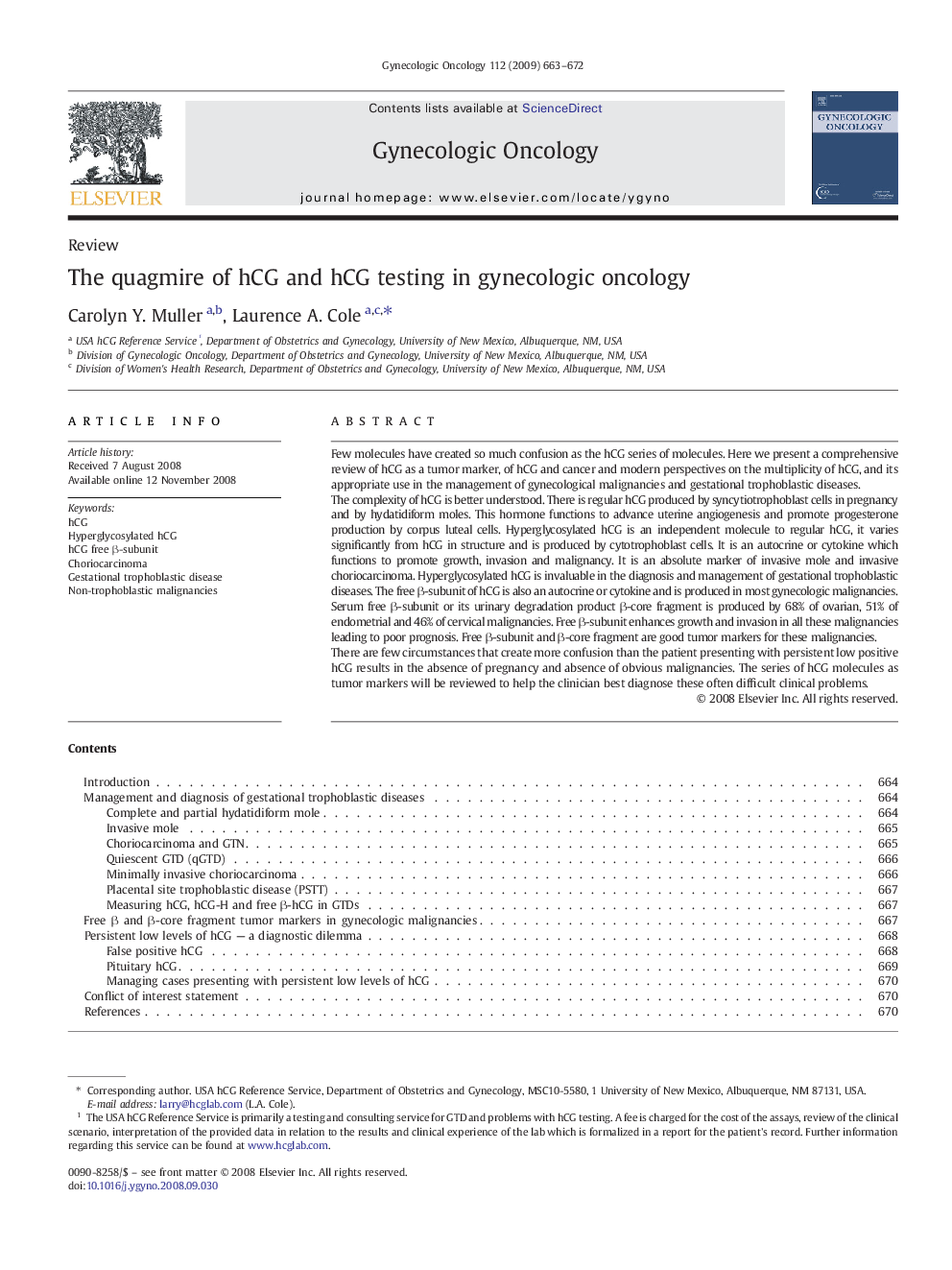| کد مقاله | کد نشریه | سال انتشار | مقاله انگلیسی | نسخه تمام متن |
|---|---|---|---|---|
| 3945982 | 1254308 | 2009 | 10 صفحه PDF | دانلود رایگان |

Few molecules have created so much confusion as the hCG series of molecules. Here we present a comprehensive review of hCG as a tumor marker, of hCG and cancer and modern perspectives on the multiplicity of hCG, and its appropriate use in the management of gynecological malignancies and gestational trophoblastic diseases.The complexity of hCG is better understood. There is regular hCG produced by syncytiotrophoblast cells in pregnancy and by hydatidiform moles. This hormone functions to advance uterine angiogenesis and promote progesterone production by corpus luteal cells. Hyperglycosylated hCG is an independent molecule to regular hCG, it varies significantly from hCG in structure and is produced by cytotrophoblast cells. It is an autocrine or cytokine which functions to promote growth, invasion and malignancy. It is an absolute marker of invasive mole and invasive choriocarcinoma. Hyperglycosylated hCG is invaluable in the diagnosis and management of gestational trophoblastic diseases. The free β-subunit of hCG is also an autocrine or cytokine and is produced in most gynecologic malignancies. Serum free β-subunit or its urinary degradation product β-core fragment is produced by 68% of ovarian, 51% of endometrial and 46% of cervical malignancies. Free β-subunit enhances growth and invasion in all these malignancies leading to poor prognosis. Free β-subunit and β-core fragment are good tumor markers for these malignancies.There are few circumstances that create more confusion than the patient presenting with persistent low positive hCG results in the absence of pregnancy and absence of obvious malignancies. The series of hCG molecules as tumor markers will be reviewed to help the clinician best diagnose these often difficult clinical problems.
Journal: Gynecologic Oncology - Volume 112, Issue 3, March 2009, Pages 663–672